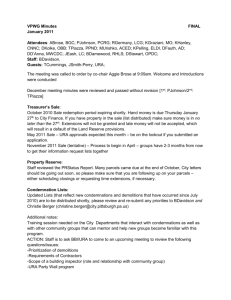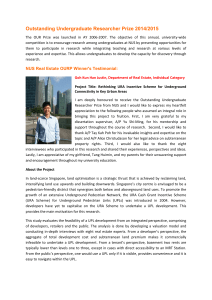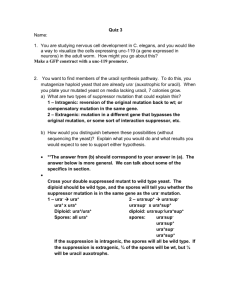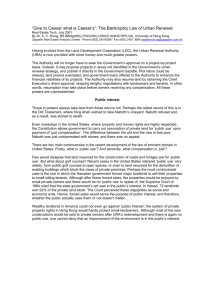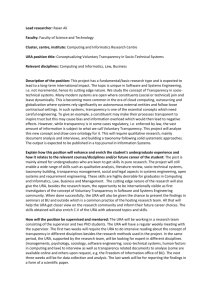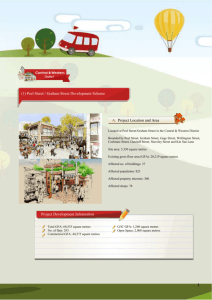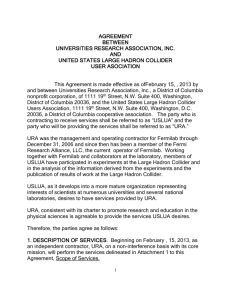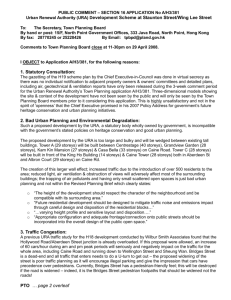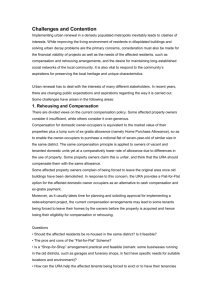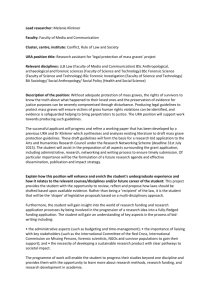Sustainability is URA`s corporate commitment. It interweaves the
advertisement
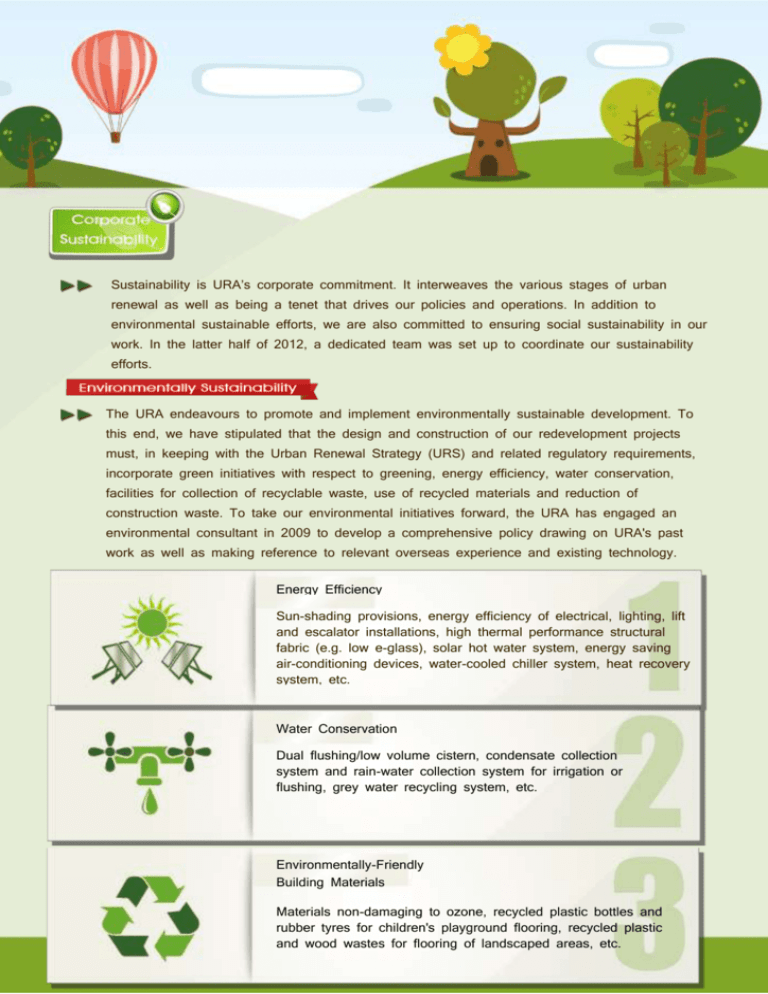
Sustainability is URA’s corporate commitment. It interweaves the various stages of urban renewal as well as being a tenet that drives our policies and operations. In addition to environmental sustainable efforts, we are also committed to ensuring social sustainability in our work. In the latter half of 2012, a dedicated team was set up to coordinate our sustainability efforts. The URA endeavours to promote and implement environmentally sustainable development. To this end, we have stipulated that the design and construction of our redevelopment projects must, in keeping with the Urban Renewal Strategy (URS) and related regulatory requirements, incorporate green initiatives with respect to greening, energy efficiency, water conservation, facilities for collection of recyclable waste, use of recycled materials and reduction of construction waste. To take our environmental initiatives forward, the URA has engaged an environmental consultant in 2009 to develop a comprehensive policy drawing on URA's past work as well as making reference to relevant overseas experience and existing technology. Energy Efficiency Sun-shading provisions, energy efficiency of electrical, lighting, lift and escalator installations, high thermal performance structural fabric (e.g. low e-glass), solar hot water system, energy saving air-conditioning devices, water-cooled chiller system, heat recovery system, etc. Water Conservation Dual flushing/low volume cistern, condensate collection system and rain-water collection system for irrigation or flushing, grey water recycling system, etc. Environmentally-Friendly Building Materials Materials non-damaging to ozone, recycled plastic bottles and rubber tyres for children's playground flooring, recycled plastic and wood wastes for flooring of landscaped areas, etc. 1 Greening Landscaped open space, roof garden, vertical greening, street planting, etc. Facilities for Collection of Recyclable Waste e.g. Domestic waste, etc. Reduction of Construction Waste and Environmental Nuisance Waste management plan, introduction of noise mitigation measures, etc. The redevelopment of Kwun Tong Town Centre illustrates a comprehensive and visionary design that includes optimisation of the disposition and form of buildings to ensure adequate noise mitigation and air ventilation; preservation of 25 old trees and the employment of vertical and rooftop greenery techniques to provide a green coverage of around 30% (making it one of the greenest spots in the city); utilisation of water-cooled chillers and mixed-mode air-conditioning system in the commercial portion to lower the energy consumption. URA recognises that it is in a position to be an advocate of green building design as part of urban renewal, and high environmental standards are therefore imposed on both our self-developed projects and projects that are implemented through joint ventures. Eight redevelopment projects have achieved the Hong Kong BEAM Platinum (Final) rating as of March 2013, of which are Mount Davis 33 in Kennedy Town, Vision City in Tsuen Wan, i-home, Florient Rise and Lime Stardom in Tai Kok Tsui, 2 Island Crest in Sai Ying Pun, Queen's Cube in Wan Chai and Baker Residences in Hung Hom. Setting a high green building standard for these eight projects has motivated the respective designs to optimise use of resources through various measures. It also propagates an important supply chain effect on the downstream consumers as the residential flats were installed with energy-efficient and water-efficient appliances. As of March 2013, the 8 accredited projects with BEAM Platinum (Final) Rating by the Hong Kong Green Building Council have achieved: The URA’s projects also take into account the local characteristics of individual district. For instance, in view of the higher proportion of elderly in Sham Shui Po, the URA has planned to incorporate elderly-friendly design features for the flats in the district. Another example is a century-old street market. In order to preserve and sustain this market near the site of the Graham Street/Peel Street Development Scheme in Central, the URA invested an extra of HK$200 million and prolonged the schedule for two years so that the project could be 3 implemented by phases to provide temporary shops for shops selling perishable goods. Such arrangements help sustaining the market vibrancy. Without URA’s intervention, the market might have degenerated like other markets in the neighbourhood. The URA’s acquisition policy comprises cash compensation or rehousing, both of which can improve the living standards of affected households. For example, among the respondents in a social impact tracking study commissioned by the URA and undertaken by the Chinese University of Hong Kong for the Kwun Tong Town Centre project, more than 70% of affected domestic respondents feel satisfied with their improved quality of living after relocation while 85% of non-domestic respondents have continued business in better premises in the district after relocation. According to the ongoing projects during the 2012/2013 financial year, 244 eligible tenant households were compensated with cash and 107 eligible tenant households were re-housed in public housing estates of which 98% were re-housed in urban areas. To embrace more diversified uses of the urban space, the URA has offered concessionary tenancy to non-governmental organisations (NGOs) and social enterprises (SEs) both in our 4 acquired properties and dedicated preserved historical buildings, e.g. Hong Chi Association, Hong Kong Federation of Youth Groups and New Life Psychiatric Rehabilitation Association. For 2012/13 financial year, the URA provided: Besides redevelopment and rehabilitation to improve the living conditions and economy in the old districts, the URA also brings arts and culture to the local community, with an aim to integrate arts and cultural elements in urban renewal, to enhance the quality of living of those residents. Urban renewal projects also bring benefits to local economies. One of the URA’s major tasks is to revitalise old districts by enhancing the socio-economic and environmental fabric for the benefit of the community. Redevelopment can unleash the hidden economic energy of old districts, and also boost economic activity in the surrounding areas. Langham Place in MongKok is a good example of such. Recent URA projects have also increased the number of street shops and small shops with particular attention to maintaining the street vibrancy. These projects have contributed to improved streetscapes that have benefited local residents and increased patronage flow, boosting local businesses. In addition, Rehabilitation can enhance the value of old buildings, hence revitalising the secondary market of old buildings. By extending the useful life of the buildings concerned, rehabilitation effectively contributes to the reduction of solid waste that may otherwise be generated during building demolition, thereby lessening the burden on our landfills which are nearing their capacities. While improving building safety and cityscape, rehabilitation can achieve the dual objectives of creating more job opportunities in the related sectors. 5 6
